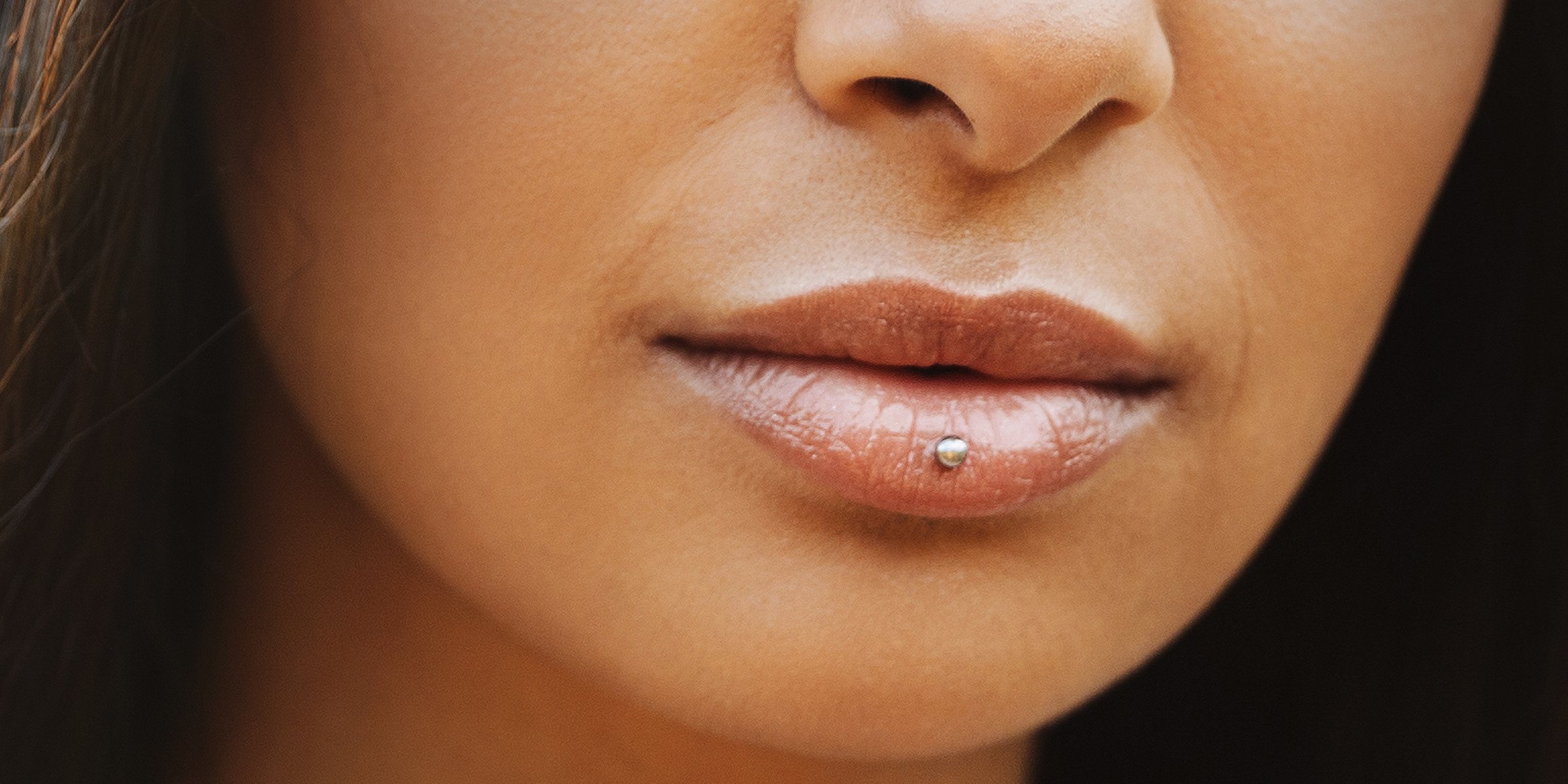
Ashley Piercings Are One More Way to Make a Lip Stud Look Better
Inverted vertical labret piercings, better known as "Ashley piercings," are one way to step up or transition to a more edgy aesthetic. However, like all kinds of body modification, they must be performed by an experienced professional who understands lip anatomy.
Piercings on different parts of the body have a few nicknames; however, one of the most random ones is "Ashley" for the inverted labret piercing. The origins of this nickname elude even the knowledge of experienced piercers. According to the publication Byrdie, the same goes for all nicknamed piercings.
Some have concluded that perhaps the first person to modify their lip this way may have been named Ashley. Still, while it may be an interesting fact to find, the most crucial details one must first understand are the importance of hygiene during the procedure, what to expect, and how to care for the piercing as it heals properly.

An illustration of different kinds of lip piercings | Source: Shutterstock
What Is an "Ashley" Piercing?
Professional piercer Kynzi Gamble said inverted vertical labret piercings are typically done on the middle of the lower lip. The methods of the piercing procedure differ slightly in terms of the jewelry a piercer will use.
Another professional body modification artist, Johnny Pearce, explained that the jewelry goes through the bottom lip and is secured with a curved barbell or a flatback stud.
If a person wants an Ashley piercing, it'd be wise to find a body modification artist who understands that each person's bottom lip anatomy will differ from the next.
With that in mind, the location of the piercing must be precise to avoid causing any damage to the veins or gum lining. Professional piercer William Thompson echoed this warning, saying:
"Placement should always take the anatomy of the lips and teeth into account to make sure it is safe to pierce."
Preparation and Possible Risks of Getting an Ashley Piercing
The pain level of Ashley piercings differs from person to person due to anatomy variability, the chosen location, and the equipment quality. Until a person decides to do it, they won't know how painful they might find the procedure.
However, Thompson assured that even with individual pain tolerance being a factor, the general pain scale of an Ashley piercing between 1 and 10 is around 5-6. Kynzie Gamble added that Ashley Piercings take about four months to heal properly, and the jewelry would need to be changed during that time.
After getting an Ashley piercing, one can expect some unfavorable side effects, especially if done unhygienically. Some side effects include infections, exposure to life-threatening diseases such as HIV, injury to the gums or teeth, and scarring if the pierced site is irritated.

A black and white illustration of different kinds of piercing jewelry | Source: Shutterstock
However, some normal reactions that are part of the healing process are swelling and inflammation if a person has thick lips. Because Ashley piercings are oral, Colgate advised that good oral hygiene can help avoid unfavorable side effects.
Aftercare Tips
Colgate listed a few more guidelines on how to care for a fresh Ashley piercing. The oral hygiene giant warned against playing with or rotating the jewelry and placing any items that may harbor bacteria on the lips, including pens, pencils, and temple tips of glasses.
Moreover, regular cleanings with a local dentist are also recommended. Brushing twice a day, flossing, and using "antimicrobial mouth rinses" will also help to keep the pierced site clean. Another thing to avoid is letting food get stuck around the jewelry.

A photo of a sign that reads "Piercing" | Source: Shutterstock
Other Existed Types of Lip Piercing
There are over ten types of lip piercings, all of which have different locations and nicknames. Among the ones listed by Cosmopolitan is the philtrum piercing, commonly known as the "Medusa piercing," which is done on the center of the upper lip. Another is the labret piercing, which goes through the "vertical midline of the lower lip."
The information in this article is not intended or implied to be a substitute for professional medical advice, diagnosis or treatment. All content, including text, and images contained on WomanlyLive.com, or available through WomanlyLive.com is for general information purposes only. WomanlyLive.com does not take responsibility for any action taken as a result of reading this article. Before undertaking any course of treatment please consult with your healthcare provider.
